Experimentation can fuel creativity and spark unexpected results. At browngrotta arts, we are continually impressed by our object-making artists’ ability — and willingness — to reinvent themselves rather than remain in a successful, but predictable, lane.
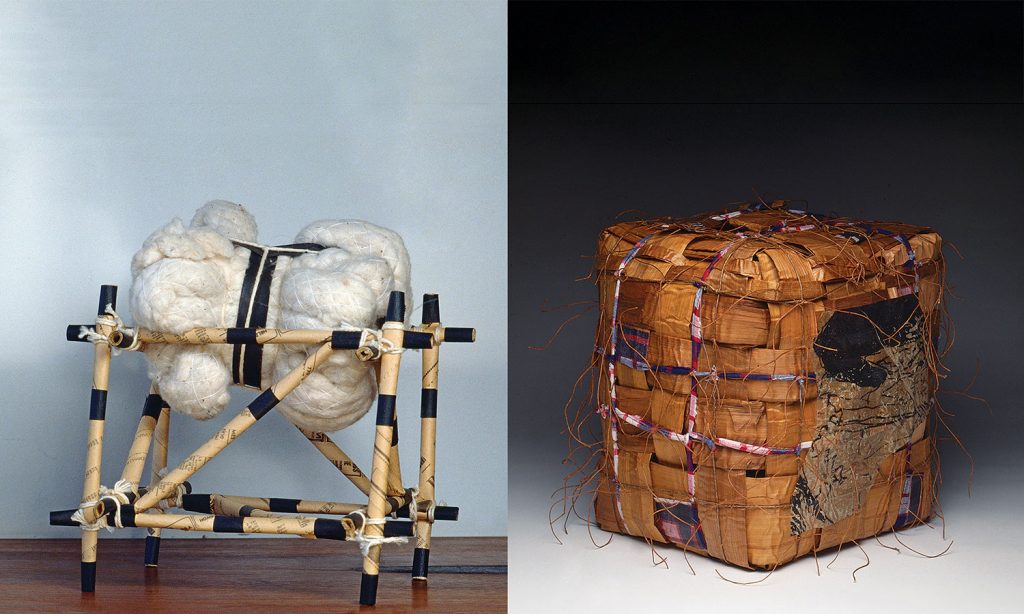
Foremost among the experimenters was perhaps Ed Rossbach who tried unexpected materials and symbols in his baskets, vessels, and assemblages including plastic, cotton balls, cardboard and Mickey Mouse. When plaiting, weaving and lace-making had been thoroughly explored, he taught himself cedar basketmaking and turned to images of bison and Native Americans.
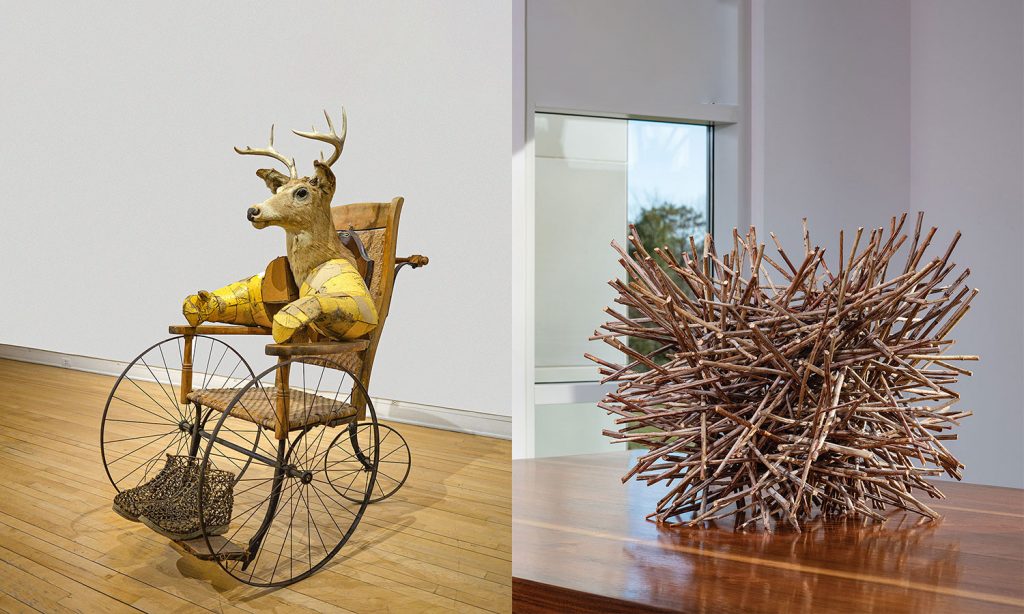
John McQueen has also made deviations. Most of his sculptures are made of sticks and bark, but he sometimes veers from that path, incorporating cardboard, plastic and found objects.

The late Dorothy Gill Barnes was a weaver and manipulator of twigs and bark, as well, but later in her career, she changed her approach after collaborating with woodturners and glass makers. In Bark and Glass Triptych, for example, the rustic bark is still a primary component, but echoed by sleek glass interior.
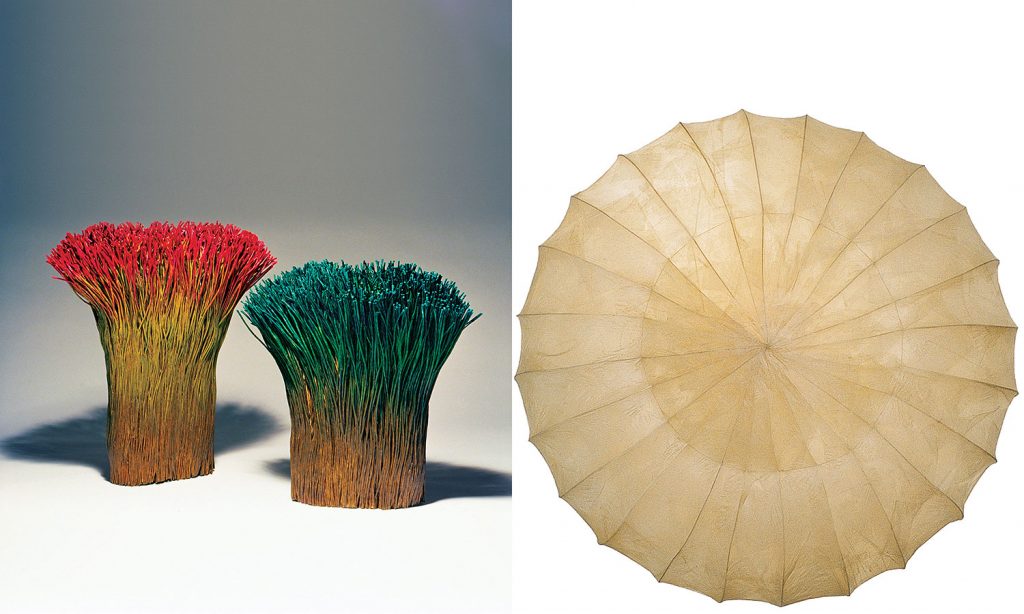
One of our first exhibitions at browngrotta arts featured Mary Merkel-Hess‘ jewel-toned vessels of reed and paper in blues and reds and even purple. The works were very popular and we sold nearly every one. Two years later, we asked Merkel-Hess to create work for another two-person exhibition. Rather than recreate her first successful show, however, she sculpted works of no color — new shapes, made of translucent gampi paper. They were wildly different, but equally well-received, inspiring collectors to acquire multiple works by Merkel-Hess, accompanying her on her artistic journey. Since then she has continued to work in color — but in larger scale and different forms. She still makes room for the minimal, however, like Among the Trees, II, her 2020 wall work of gampi and pencil.
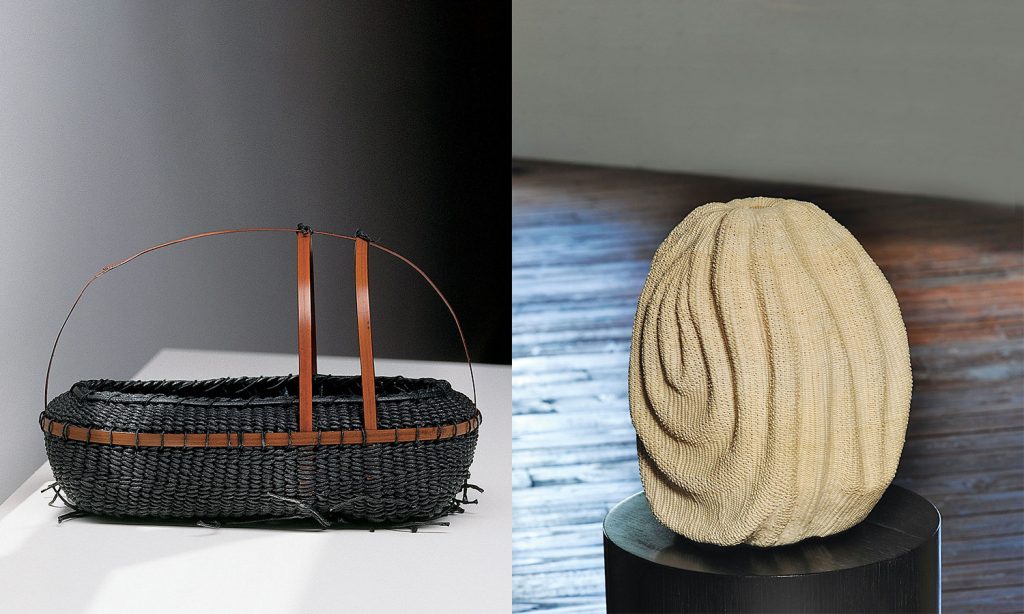
A difficulty with her hands and the movement required to make her small, twined basket forms, led Nancy Moore Bess to invent a new process involving carved foam shapes. Still working with variations of twining and knots, the carved forms allow her to rest her hands as she worked. The result was a completely new body of work that built on previous efforts.
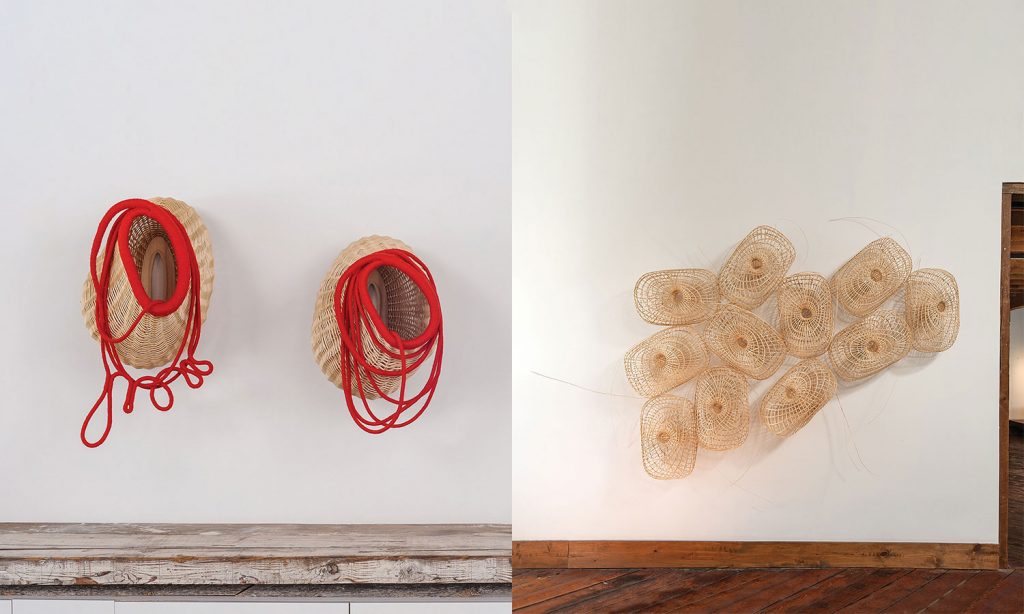
Stéphanie Jacques is another relentless reinventer. Her basket-like sculptures have incorporated yarn and woodworking and clay. She has added performance, video and still photography to the mix as well.
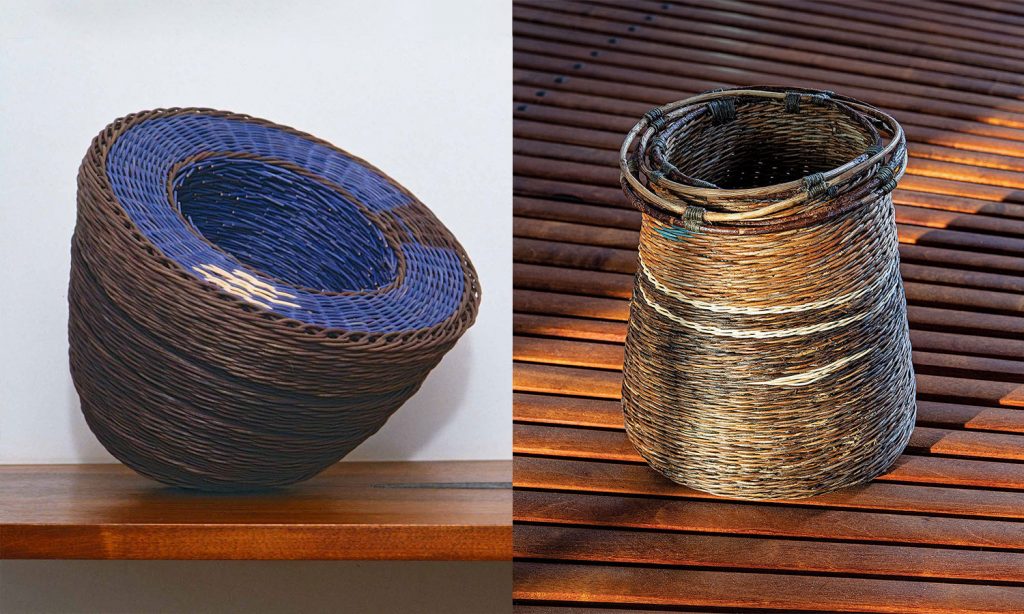
Kari Lønning invented the double-walled basket of smooth, round rattan, then reinvented her baskets with fine and variegated akebia vines.
Other artists at browngrotta arts have also made changes in materials and approach. Contact us at art@browngrotta.com if you want to know more about the specific path for any artist whose work we represent. Their predisposition to change and exploration keeps viewers engaged.
